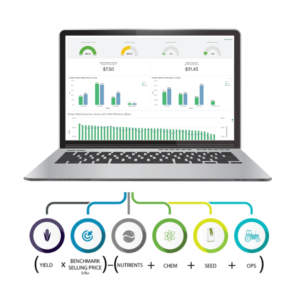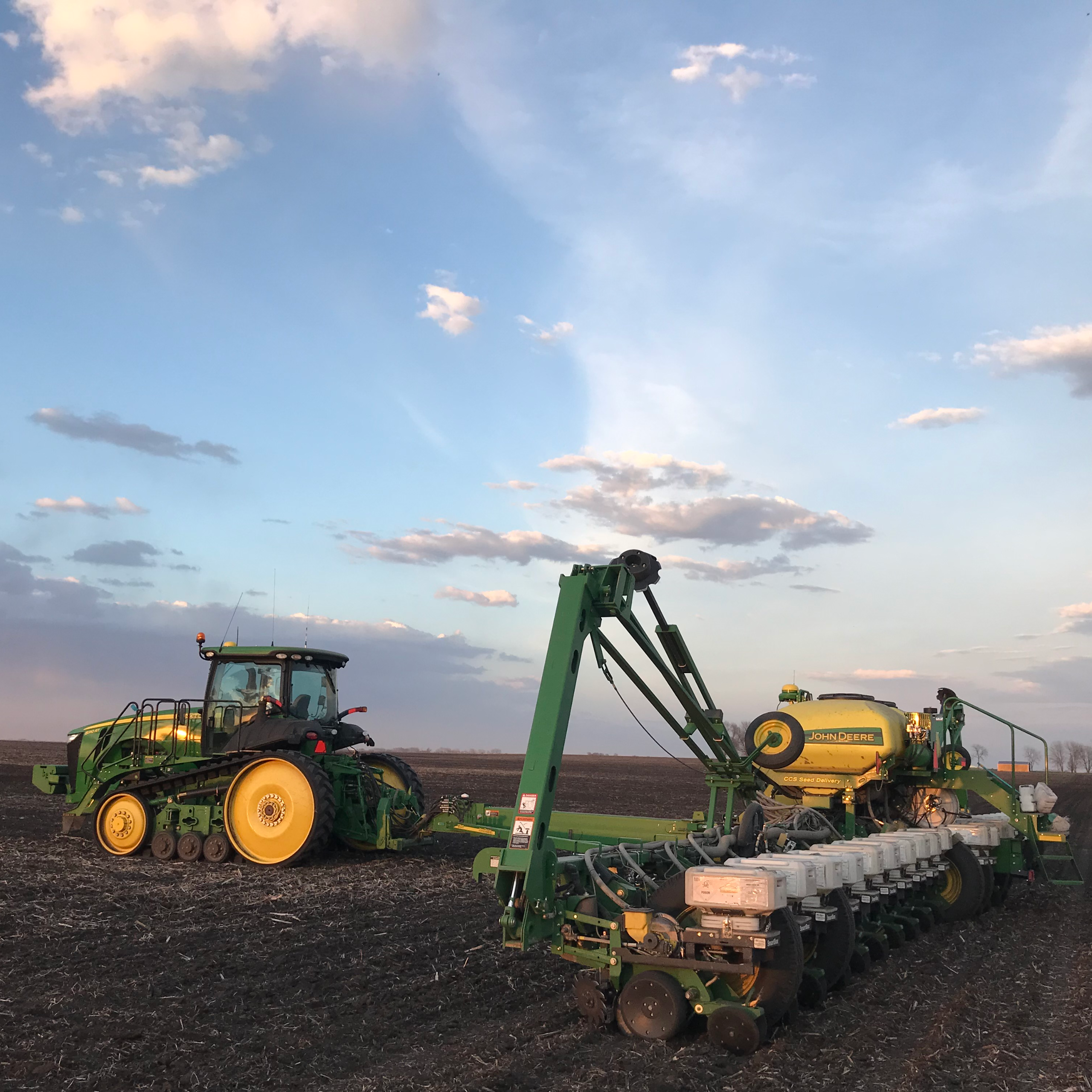
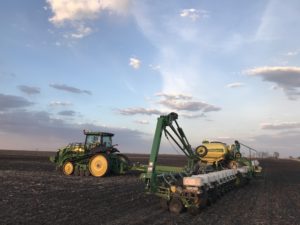
Today we are joined by Mike Manning (aka @datamanning on Twitter) to discuss variable rate seeding in precision ag.
Mike is an agronomic information advisor in the state of Nebraska. He’s a western Nebraska farm kid from the panhandle with a wide range of precision and agronomic experience. Mike has been working closely with growers throughout most of Nebraska for the last eight years.
In this episode we cover:
- Management Zones
- Measuring Performance
- Success Stories of Growers using Variable Rate Seeding
- Yield Efficiency
- How to Start Using Variable Rate with Your Current Equipment
Laying the Foundation for your Growing Season
As the calendar turns to April, and the planting season nears, many producers are finalizing planting plans. Your planting operation (hybrid and variety selection, seeding rate decisions, and the execution of it all) will lay a critical foundation for your growing season.
Of all the fieldwork we do in a given year, planting is one operation we only have one chance to get right (assuming you’re not a fan of replanting). Above all, one of the most important decisions growers can make is determining the best seeding rate for each of your hybrids and varieties. Aside from properly setting up and configuring the planter itself, that is.
Historically, seed selection and seeding rate decisions have been based on a wide variety of available resources. These include seed plot data, ag retailer/coop trials (often in conjunction with major seed suppliers), seed advisors, and ‘neighbor input’, as well as a variety of seed company rate calculators available online. While a diverse selection of resources are available, how do you know if these seeding rates are actually suitable for your farm?
In 2005, as GPS-based variable rate planting entered the equipment market, Premier Crop introduced the Learning Block™ concept. Learning Blocks are 2 – 4 acre blocks placed in specific areas of the field (unlike strip-trials), giving growers and advisors the opportunity to test and verify responses to different seeding (and/or fertility) rates in a low-risk, easily executable experiment (IE +/- 3,000 seeds/acre). Combined with Management Zone based VR seeding, these Learning BlockTM trials opened the door for growers to measure and build their own population response datasets on their own farm. Importantly, Learning Blocks, also provided insight as to where those population changes should take place within the field.
Enhanced Learning Blocks (ELBs)
In 2016, Premier Crop Systems unveiled a new tool called Enhanced Learning Block™ (ELBs)*. Building upon the traditional Learning Blocks concept, ELBs allow for testing multiple rates within the same block, all while incorporating the hallmarks of traditional experimental design; randomization and replication. These randomized and replicated trials increase confidence in the trial results, which ultimately guide better decisions. Perhaps most important, growers and advisors can execute research quality trials, with their own equipment, and within each of their own fields.
So, how important is knowing the right seeding rate? Does it really produce any more yield? Does it really save me any money? Am I any more efficient than I was before? The examples below illustrate the importance of determining, and knowing, the right seeding rate for each hybrid and variety on your farm.
In this field, we have two ELBs, each testing four populations, and replicated 5 times within each block. By comparing the target rates to the as-planted rates, the equipment is very capable of executing the trials.
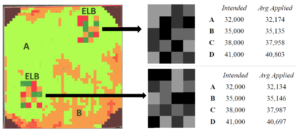
Reviewing the post-harvest analysis below, we instantly see the seeding rate had a significant impact on yield (for this particular hybrid, in this particular geography).
So, does seeding rate impact yield? The yield difference from 32,000 seeds/acre to 35,000 seeds/acre is 11 bushels/acre!
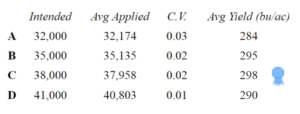
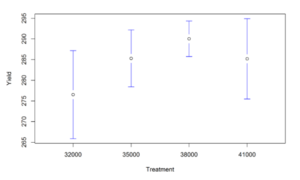
“DOES PLANTING THE RIGHT RATE SAVE,
AND/OR MAKE ME MORE MONEY?”
Variable Rate Seeding Dollars and Cents
Accounting for seed cost, and using $3.50/bu grain price, knowing to plant this hybrid at 35,000 seeds/acre v. 32,000 seeds/acre is a $29/acre decision!
38,000 seeds/acre is technically the winner in this trial. However, is the additional seed investment risk (3,000 seeds @ ~$9.40/acre), worth the relatively modest gain?
Also, we see that pushing too far, to 41,000 seeds/acre, results in ~$35/acre loss compared to 35,000 or 38,000 seeds/acre.

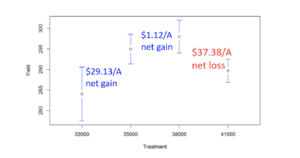
The examples I’m discussing come from an irrigated Nebraska corn and soybean operation that has successfully executed over 175 ELB trials since 2016. In this case, the grower likely has more research quality, hybrid specific population response data, generated from their own fields, than the seed companies.
You can start building your own knowledge base for your own farm by incorporating Enhanced Learning Blocks™, and working with a trusted Premier Crop Partner, or Premier Crop Agronomic Advisor. Aggregating your own ELB results can take your on-farm knowledge to the next level.
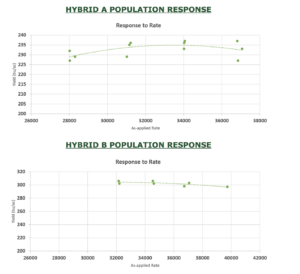
Contact Premier Crop to test your seeding rates and get started with variable rate seeding. Our agronomic information advisors can help you build own ELBs in your own fields.
NOTE: *ELBs can go anywhere! They are not region specific. Our Partners and Advisors have placed over 3,000 ELBs the last two years in the US and Canada. ELBs can be used to test a wide variety of products including Fertilizer, Crop Protection, and Seed through a variety of application methods.
-
- Dry Fertilizer Applicator
- Planter
- In-Furrow and starter – multiple rates or on/off
- PRE and POST fertility
- Sprayer, strip-till, coulter bars, drop nozzles etc.
- Crop Protection – Ground Applied
- Fungicide
- Biologicals
- Other yield enhancement products
If you are enjoying the show, tweet us using #PremierPodcast.
Free Resources:
- For more helpful tips and insight on all things data and agriculture, visit our blog at http://info.premiercrop.com/blog
- Curious about precision ag? Download our 5 Steps to Getting Started Guide: http://info.premiercrop.com/5-steps-guide
- Ready to cut through the bull? Download our No Bull Guide to Precision Ag: http://info.premiercrop.com/field-profitability-guide
- View our blog about this topic: http://info.premiercrop.com/blog/determining-the-right-seed-rate




